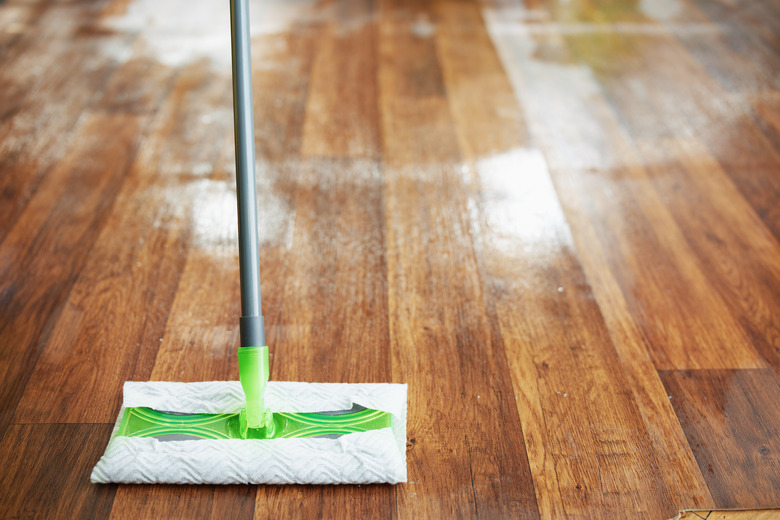How To Clean Hardwood Floors With Vinegar To Remove Sticky Residue
We may receive a commission on purchases made from links.
Hardwood flooring is durable, stylish, and long-lasting. While there is a variety of products on the market to help maintain your hardwood floor's shine, the floor may become sticky with residue or buildup over time. The fix for this stickiness is something you likely already have in your cabinets: vinegar. Learn how to remove sticky residue from your hardwood floor using plain white vinegar.
Things Needed
How to Clean Hardwood Floors With Vinegar
1. Prep Your Floors
First, ensure your hardwood floors are free of clutter or debris. Pick up and store any toys, clutter, or floor mats and vacuum or sweep up any loose dust or dirt. If your floor has muddy footprints or other tough-to-sweep spots, consider mopping your floor with water as well.
2. Create Your Vinegar Cleaning Solution
While vinegar is safe to use on hardwood, it should be diluted in order to work properly. Using undiluted vinegar can lead to sticky flooring and a strong odor that takes quite a while to dissipate. To create your cleaning solution, mix 1 cup of vinegar with 1 gallon of warm to lukewarm water in a standard-sized bucket. Gently stir the solution.
3. Spot Test Your Cleaning Solution
It's always wise to spot test anything you plan to use on your flooring. Choose an inconspicuous spot (like an area that is typically underneath furniture) and apply your cleaning solution to a small section. Allow it to sit for 10 to 15 minutes before wiping it away and confirming that your floors remain undamaged.
4. Mop or Hand Wash Your Hardwoods
To use your vinegar cleaning solution, you'll want to either mop your floors using a cotton-based mop or hand-wash them with a soft cotton cleaning cloth. Use a mop if your space is large and a cleaning cloth if it is small or if you just need to spot clean. Dip your mop or cleaning cloth into the liquid and squeeze out the excess. When your mop or cleaning cloth is damp but not dripping wet, gently work it back and forth over the entire area you're cleaning, rewetting and ringing it out as necessary.
5. Give Sticky Spots Extra Attention
If you encounter any resistance as you clean, give the extra-sticky spot a few additional swipes to ensure you remove all the residue. You may have to put a little more pressure on the mop or cleaning cloth to remove it completely.
6. Rinse Your Floors With Clean Water
Vinegar is an excellent cleaning solution but should be rinsed away after use and not left to dry on your flooring. Empty your bucket, replace your cleaning solution with clean water, and mop your floors again following the same pattern you used when you mopped with your cleaning solution.
7. Dry Your Floors
After rinsing the vinegar solution from your hardwood floors, wipe any excess water with a dry, cotton-based cleaning cloth, and then allow your floors to air-dry completely. For the easiest drying, simply open your windows, turn on a fan, and allow a few minutes to pass.
